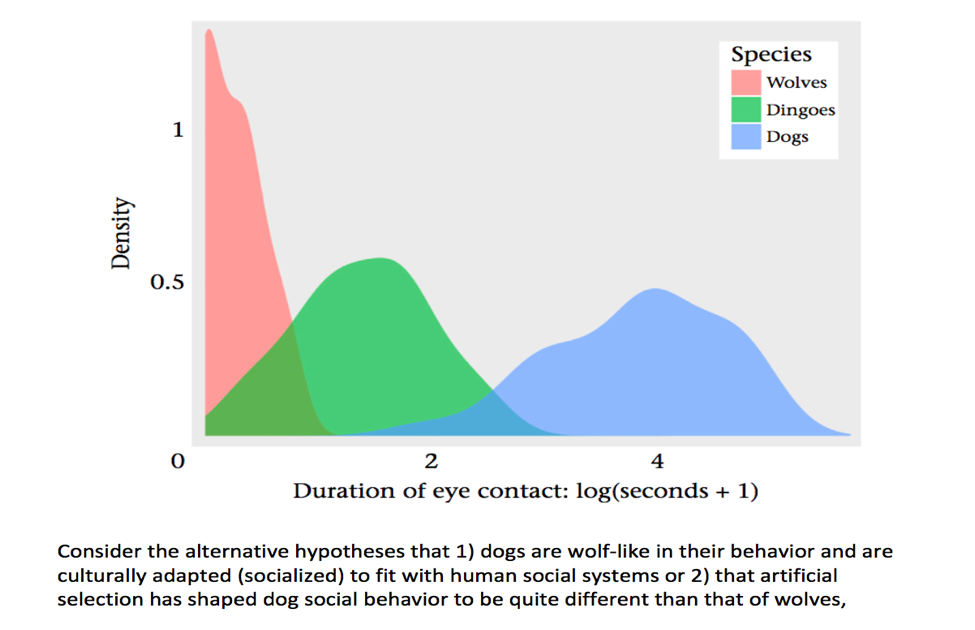Question
Dingoes establish eye contact more th an wolves, but less than dogs. The graph below presents data on duration of direct eye contact between wolves
Dingoes establish eye contact more than wolves, but less than dogs. The graph below presents data on duration of direct eye contact between wolves and humans, dingoes and humans, and dogs and humans. Eye contact is important in social greetings in wolves and dogs. We also discussed in class the related topic of subject gaze following in wolves and dogs. Dingoes are Australian wild dogs; they split evolutionarily from domestic dogs about 5000 years ago and unlike domestic dogs, they have not been subject to artificial selection during that time. In other words, they are intermediate between wolves and domestic dogs. The data in the figure below show that wolves make less eye contact with humans, dingoes are intermediate, and dogs make the most eye contact.

Question 1: Consider the alternative hypotheses that 1) dogs are wolf-like in their behavior and are culturally adapted (socialized) to fit with human social systems or 2) that artificial selection has shaped dog social behavior to be quite different than that of wolves, allowing them to fit into human social systems. Does the data in the figure help us to differentiate between the hypotheses? Why or why not?
Question 2: Think about the status of dingoes as wild intermediates between dogs and wolves. Is there anything puzzling about the level of eye contact made by dingoes? What hypotheses can you form to explain the fact that they make more eye contact that wolves yet are not artificially selected as pets? How would you test your hypotheses?
Species Wolves Dingoes Dogs 0 2 4 Duration of eye contact: log(seconds + 1) Consider the alternative hypotheses that 1) dogs are wolf-like in their behavior and are culturally adapted (socialized) to fit with human social systems or 2) that artificial selection has shaped dog social behavior to be quite different than that of wolves, Species Wolves Dingoes Dogs 0 2 4 Duration of eye contact: log(seconds + 1) Consider the alternative hypotheses that 1) dogs are wolf-like in their behavior and are culturally adapted (socialized) to fit with human social systems or 2) that artificial selection has shaped dog social behavior to be quite different than that of wolves
Step by Step Solution
There are 3 Steps involved in it
Step: 1

Get Instant Access to Expert-Tailored Solutions
See step-by-step solutions with expert insights and AI powered tools for academic success
Step: 2

Step: 3

Ace Your Homework with AI
Get the answers you need in no time with our AI-driven, step-by-step assistance
Get Started


